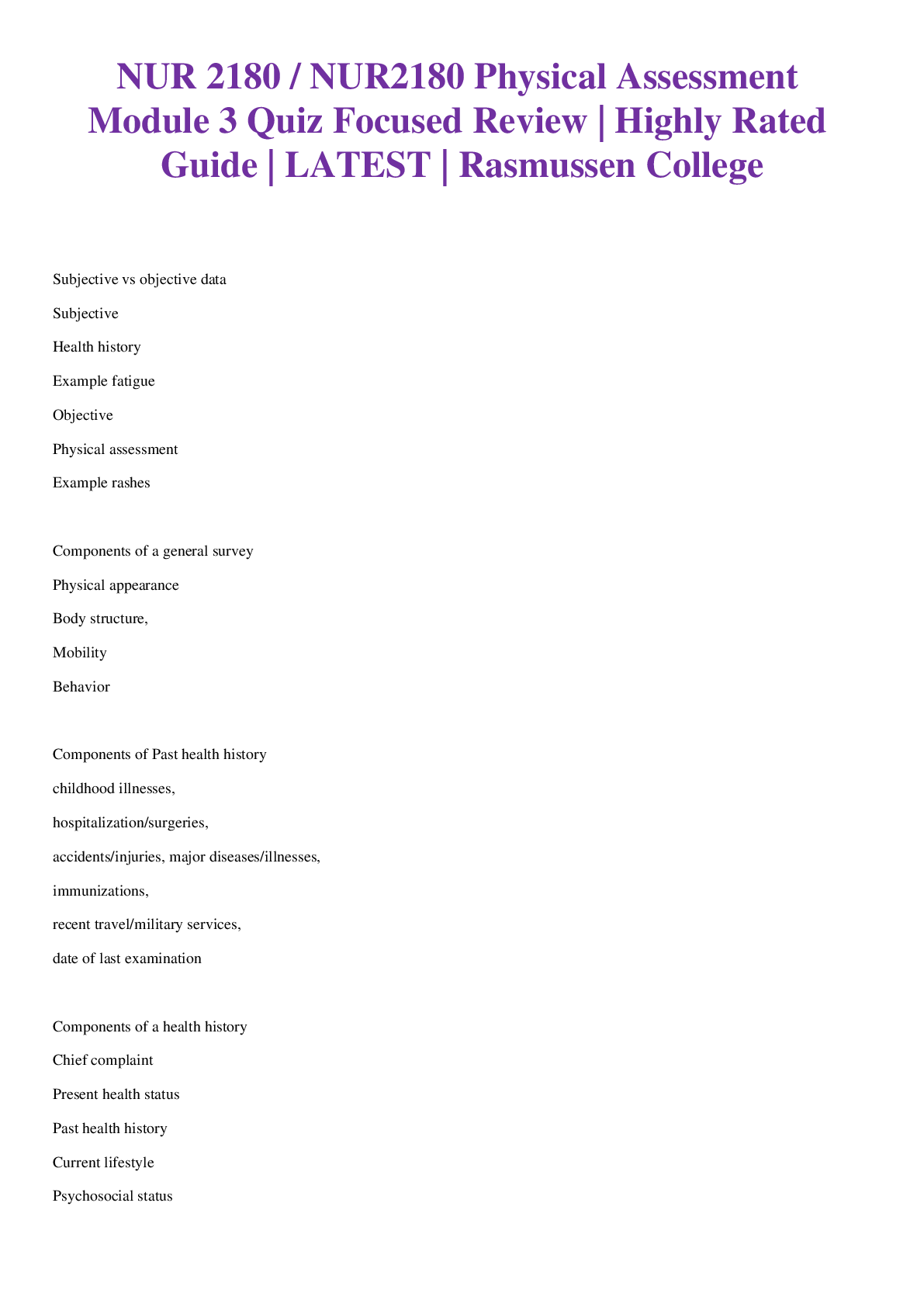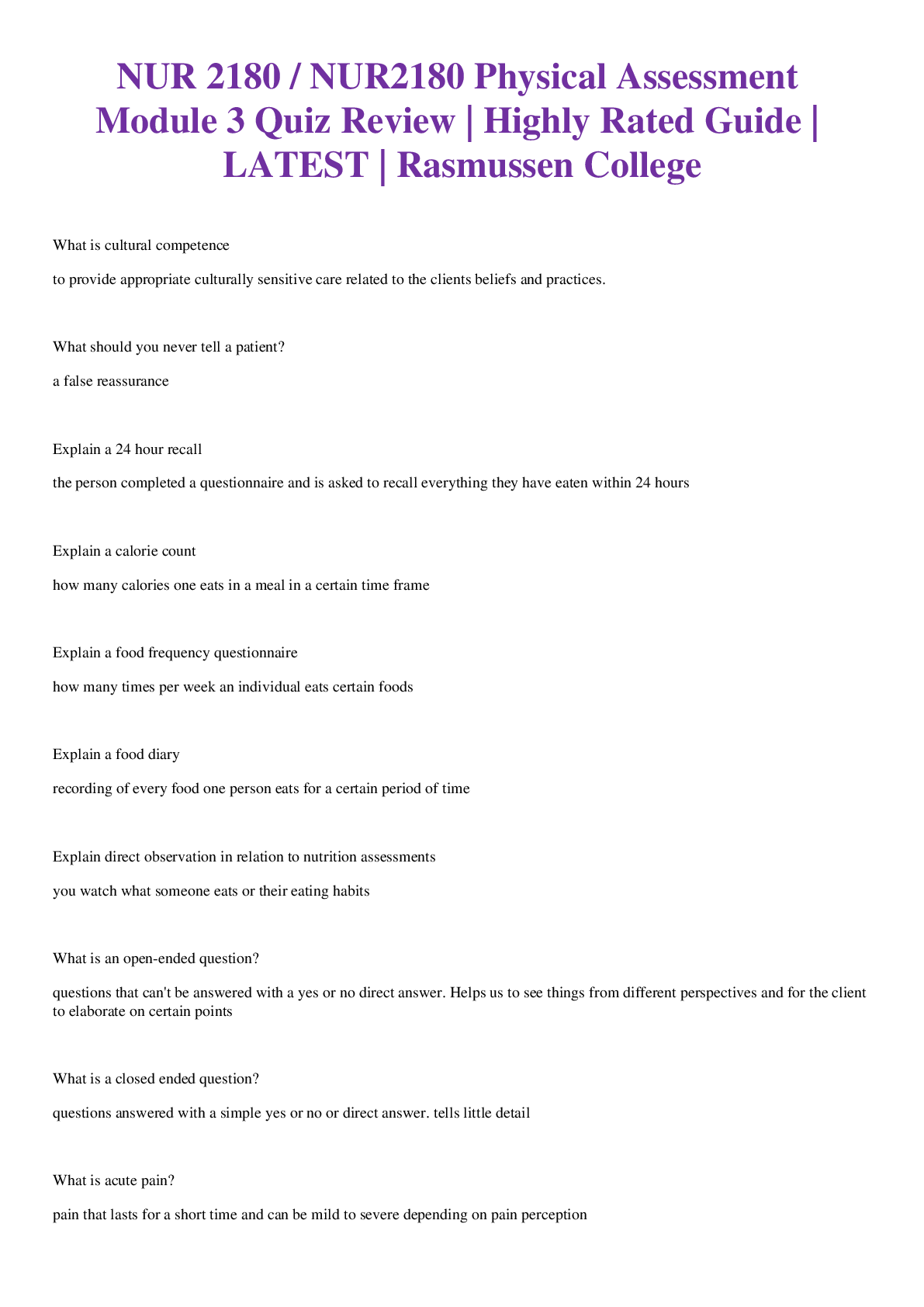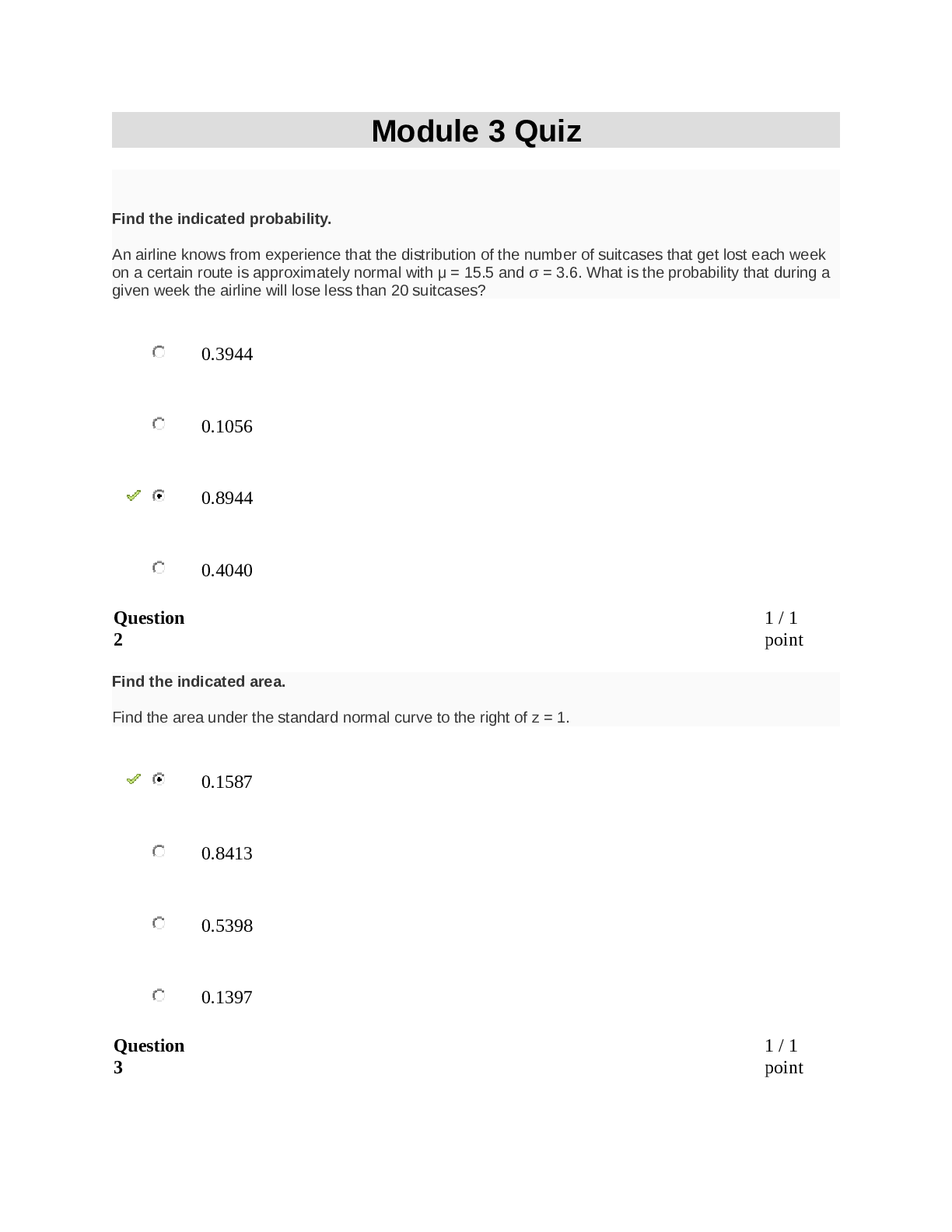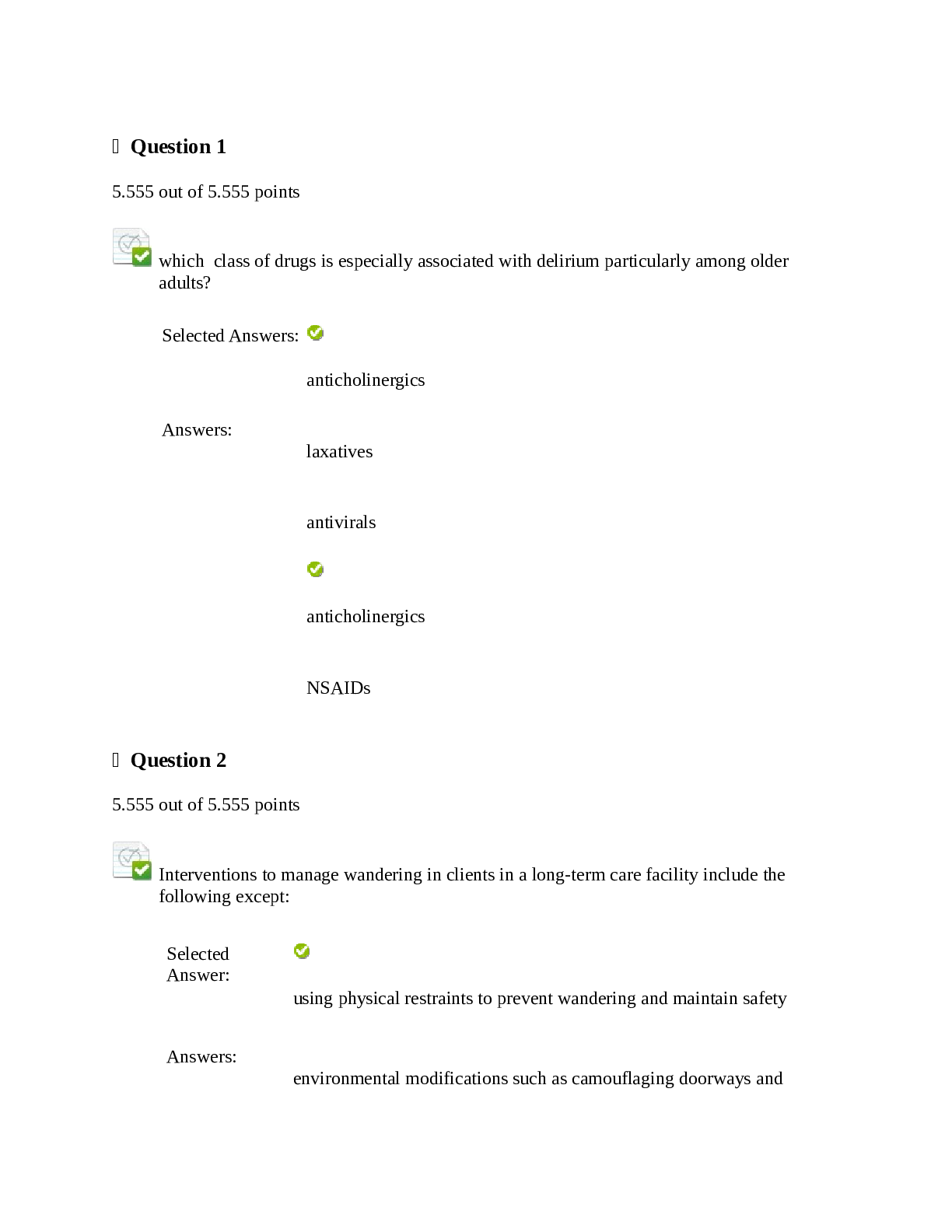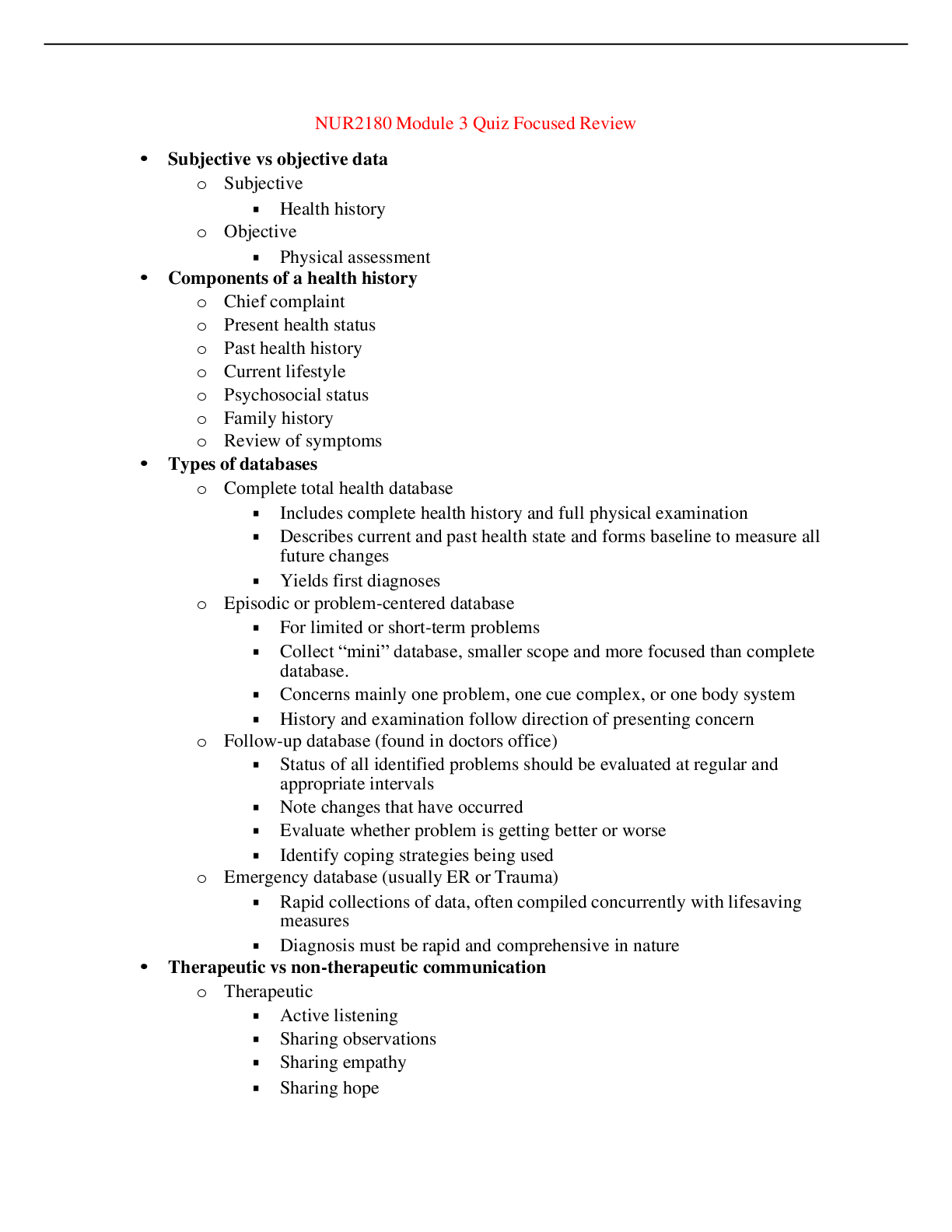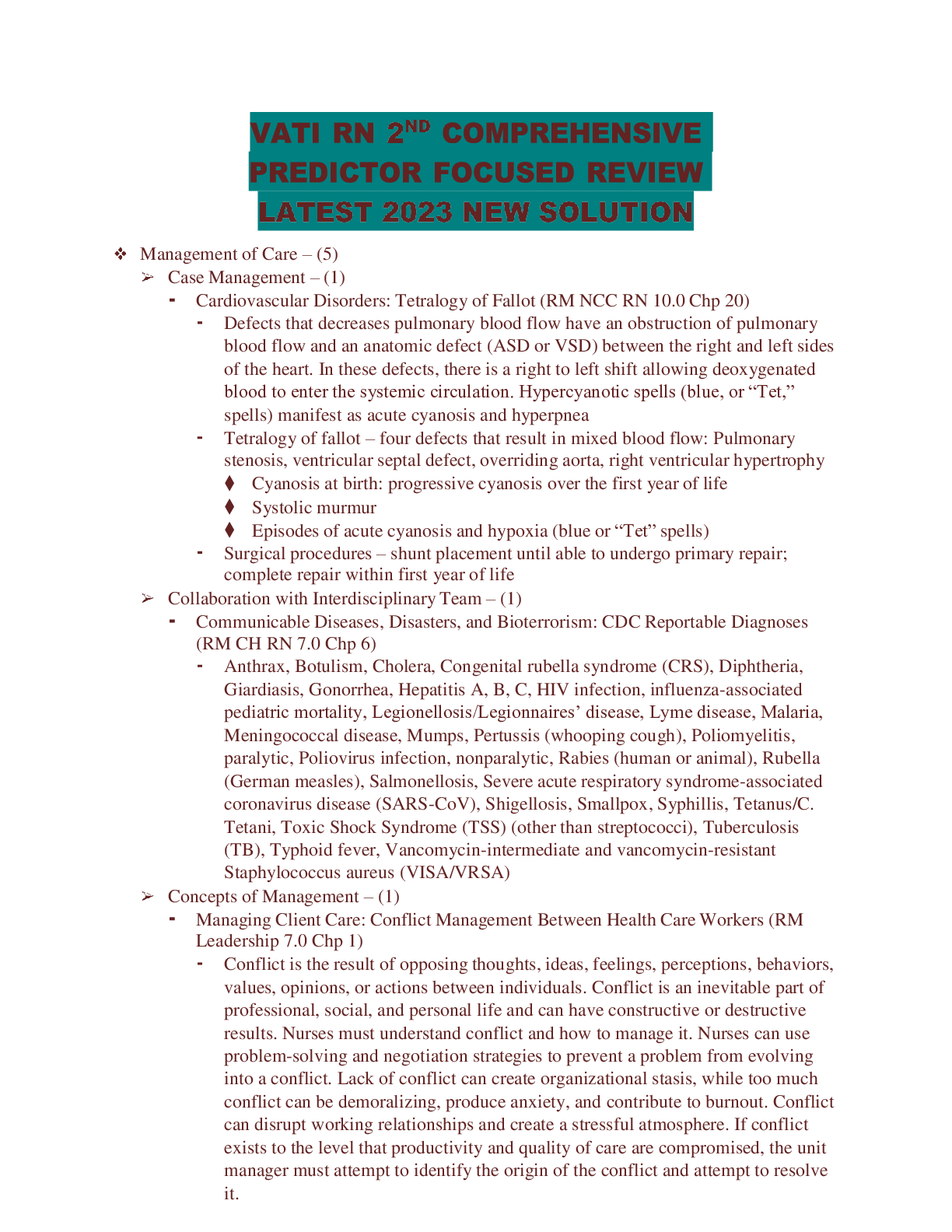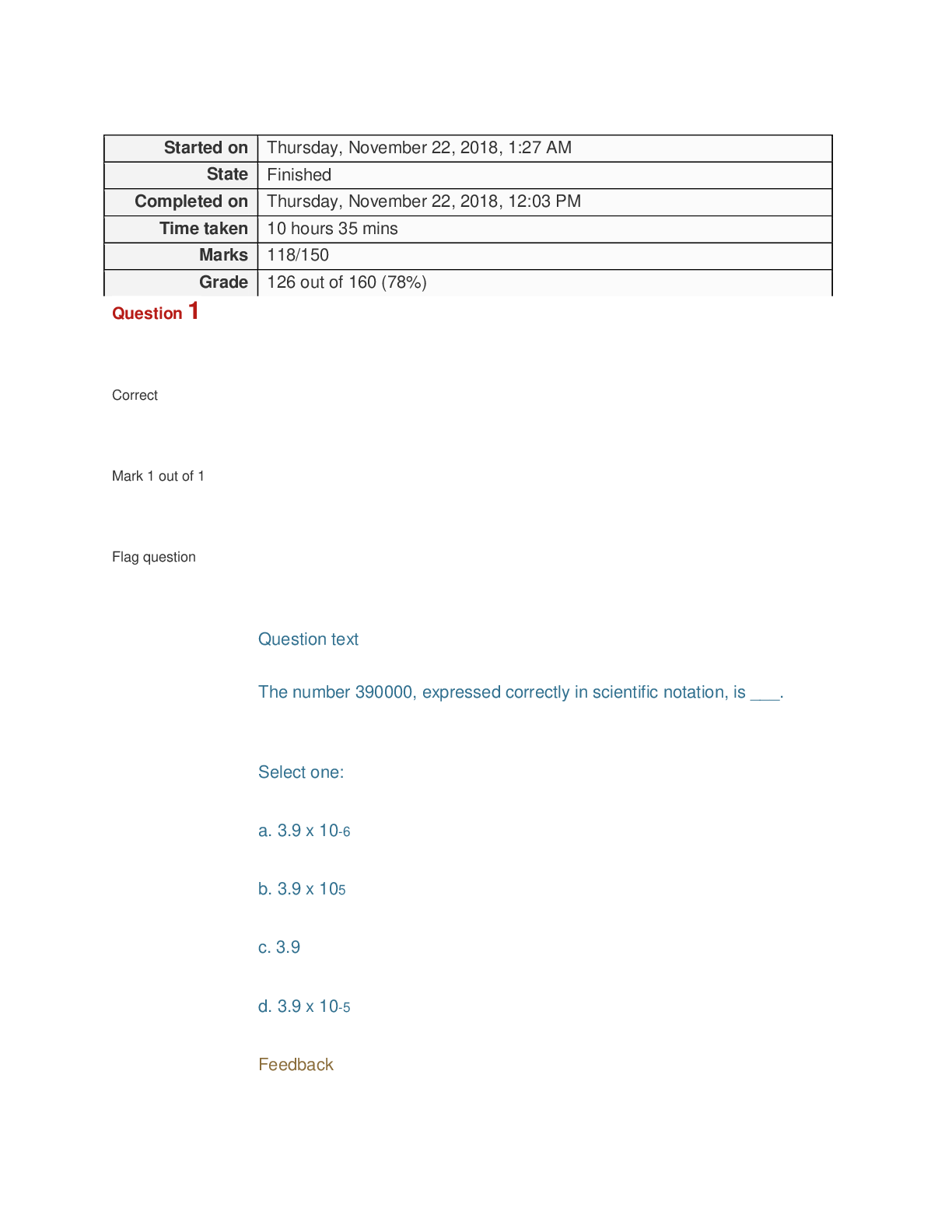*NURSING > EXAM REVIEW > NUR 2180 Module 3 Quiz Focused Review Latest updated 2022,100% CORRECT (All)
NUR 2180 Module 3 Quiz Focused Review Latest updated 2022,100% CORRECT
Document Content and Description Below
NUR2180 Module 3 Quiz Focused Review Latest updated 2022 • Subjective vs objective data o Subjective ▪ Health history o Objective ▪ Physical assessment • Components of a health history ... o Chief complaint o Present health status o Past health history o Current lifestyle o Psychosocial status o Family history o Review of symptoms • Types of databases o Complete total health database ▪ Includes complete health history and full physical examination ▪ Describes current and past health state and forms baseline to measure all future changes ▪ Yields first diagnoses o Episodic or problem-centered database ▪ For limited or short-term problems ▪ Collect “mini” database, smaller scope and more focused than complete database. ▪ Concerns mainly one problem, one cue complex, or one body system ▪ History and examination follow direction of presenting concern o Follow-up database (found in doctors office) ▪ Status of all identified problems should be evaluated at regular and appropriate intervals ▪ Note changes that have occurred ▪ Evaluate whether problem is getting better or worse ▪ Identify coping strategies being used o Emergency database (usually ER or Trauma) ▪ Rapid collections of data, often compiled concurrently with lifesaving measures ▪ Diagnosis must be rapid and comprehensive in nature • Therapeutic vs non-therapeutic communication o Therapeutic ▪ Active listening ▪ Sharing observations ▪ Sharing empathy ▪ Sharing hope ▪ Sharing humor ▪ Sharing feelings ▪ Using touch ▪ Silence ▪ Providing Information ▪ Clarifying ▪ Focusing ▪ Paraphrasing ▪ Asking relevant questions ▪ Summarizing ▪ empathy o Non-Therapeutic ▪ Asking personal questions ▪ Giving personal opinions ▪ Changing the subject ▪ Automatic responses ▪ False reassurance ▪ Self-Disclosure ▪ Confrontation ▪ Sympathy ▪ Asking for Explanations ▪ Approval or Disapproval ▪ Defensive Responses ▪ Passive or Aggressive Responses ▪ Arguing • Characteristics of a culture o Immigrants commonly maintain traditional eating customs long after language and manner of dress of adopted country become routine o Newly arriving immigrants may be at higher nutritional risk ▪ Often coming from countries with poor resources and nutrition related problems o Unfamiliar with foods, food preparation, food buying habits and food storage o Standard tables for weight and height may not be appropriate o Need to know food habits in regard to religion and culture • Types of Nutritional assessments o Anthropometric measurements o Swallowing assessment prn o Lab test ▪ Risk factors for a poor nutritional intake ▪ Questions re weight loss? Wt gain? ▪ How does age factor into nutritional intake? ▪ Food habits and customs ▪ Meal patterns ▪ Food beliefs and skills ▪ Supplement use ▪ Medical conditions affecting nutritional status • Barriers to communication o Lack of interest or attention/ lack of respect o Physical barriers ▪ A curtain ▪ A door ▪ A computer ▪ A monitor ▪ Pain ▪ Room temperature o The patients inability to hear you ▪ Hearing deficit ▪ Receptive aphasia o Safety ▪ Fear o Psychological barriers ▪ Embarrassment ▪ Disbelief ▪ Shock ▪ Fear ▪ Grief ▪ Fatigue ▪ Anger/hostility o Language ▪ Using medical jargon ▪ Speaking above someone’s education level • Types of pain- verbal and non verbal cues of pain o Acute ▪ Short term, self limiting ▪ Tissue damage ▪ Self protective mechanism ▪ Mild • Sympathetic nervous system response ▪ Severe • Parasympathetic nervous system response o Chronic ▪ Over 6 months in duration ▪ Adaptive responses ▪ Does not stop when injury heals ▪ Outlasts protective purpose ▪ Abnormal processing of pain fiber from peripheral and central sites o Verbal ▪ Moaning ▪ Crying o Non verbal ▪ Facial expression ▪ Cries ▪ Breathing ▪ Arms ▪ Legs ▪ alertness • Assessment techniques and what we can learn from each one o Inspection ▪ Looking for conditions you can observe with your eyes, ears, or nose. • Skin color, lesions, bruises or rash o Auscultation ▪ Abdominal assessment • Bowel sounds ▪ Lung sounds ▪ Heart sounds o Palpation ▪ Light • Allows you to assess for texture, tenderness, temperature, moisture, pulsations, and masses ▪ Deep • To assess for masses and internal organs o Percussion ▪ Elicit tenderness ▪ sounds that may provide clues to underlying problems • Review of systems in health history o P ▪ Provoking factors • What brought on the pain? o Q ▪ Quality • Stabbing, throbbing, burning o R ▪ Radiation • Does the pain radiate anywhere? o S ▪ Severity/symptoms • How bad is the pain? o Scale 0-10 • Are there other symptoms with the pain? o T ▪ Time • Constant? • What makes it better or worse? [Show More]
Last updated: 1 year ago
Preview 1 out of 8 pages
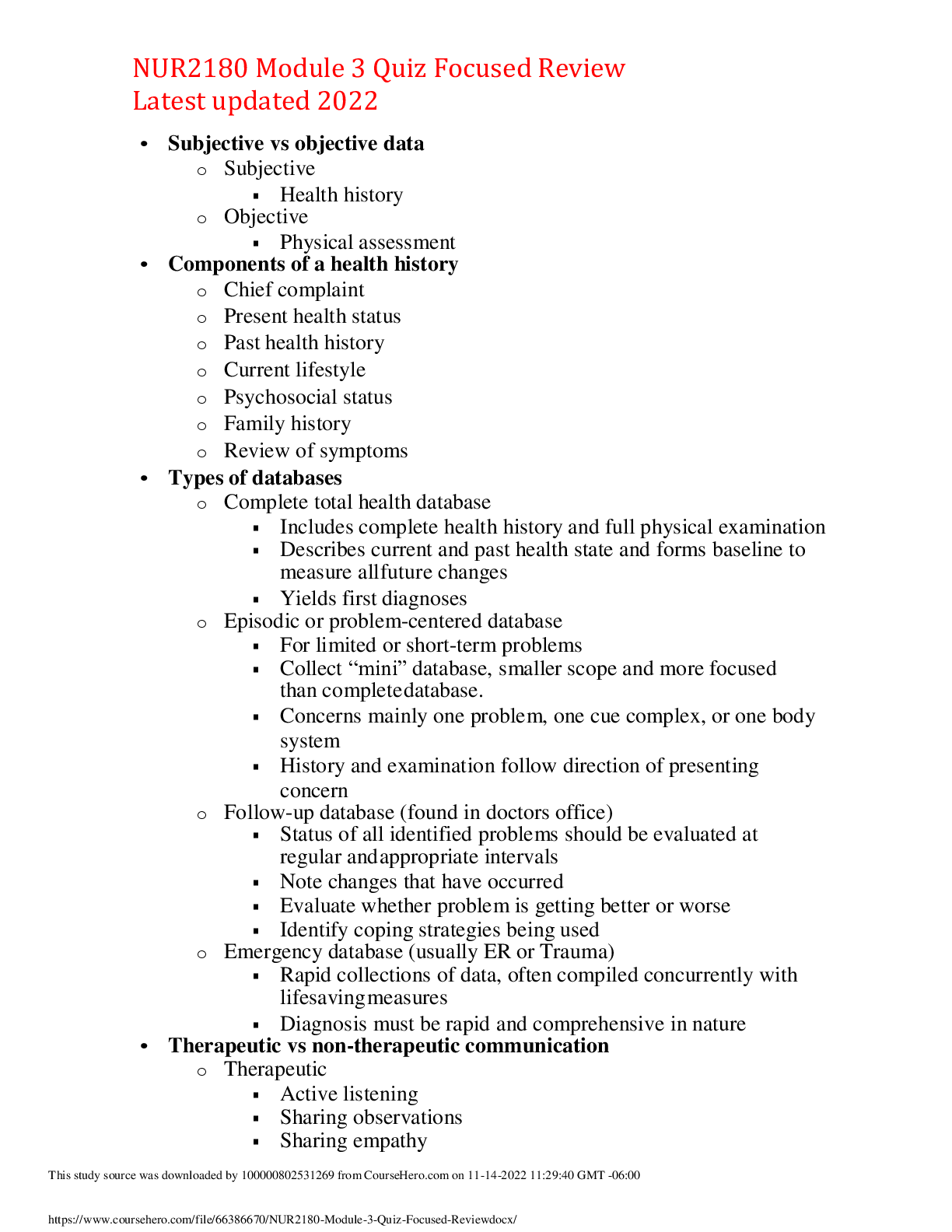
Reviews( 0 )
Document information
Connected school, study & course
About the document
Uploaded On
Nov 14, 2022
Number of pages
8
Written in
Additional information
This document has been written for:
Uploaded
Nov 14, 2022
Downloads
0
Views
33


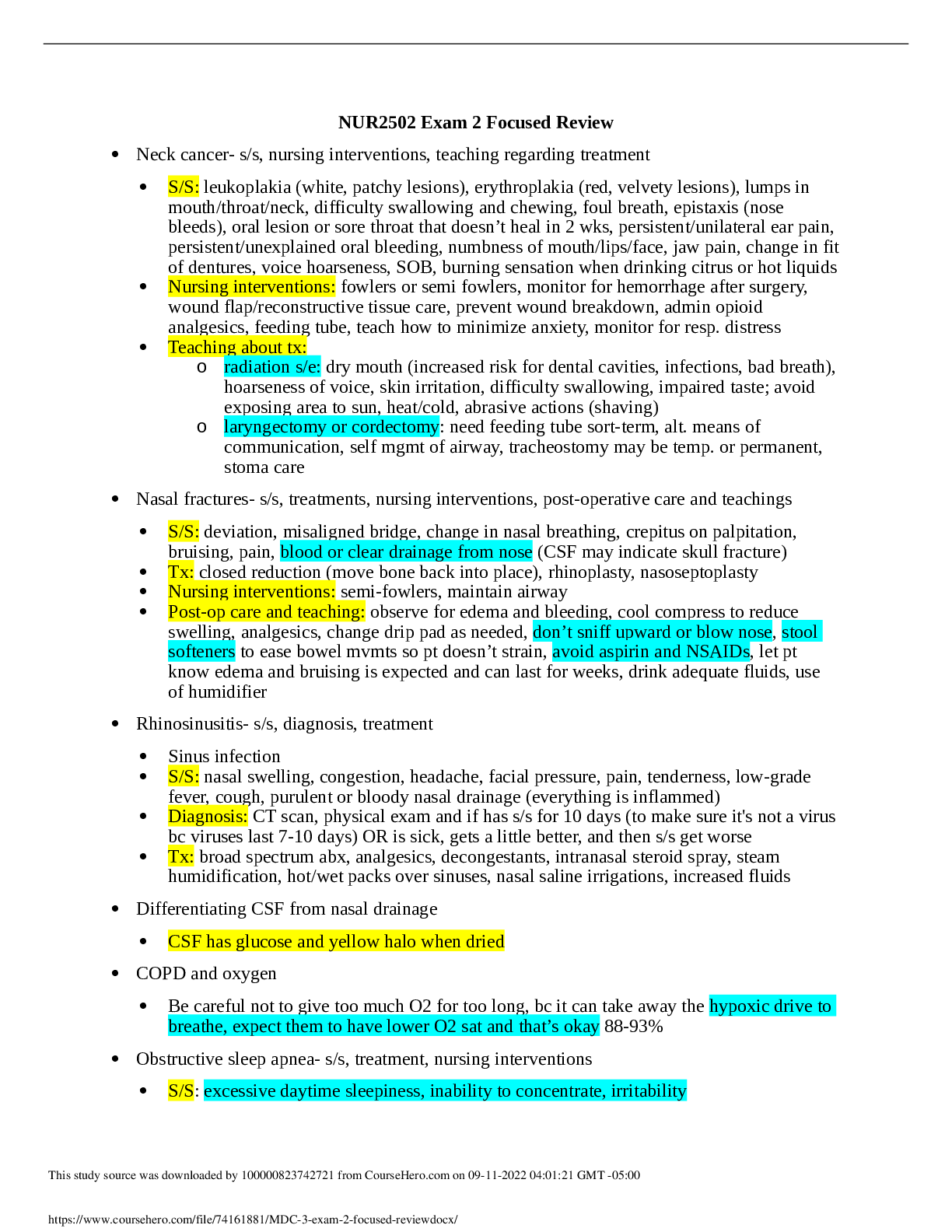
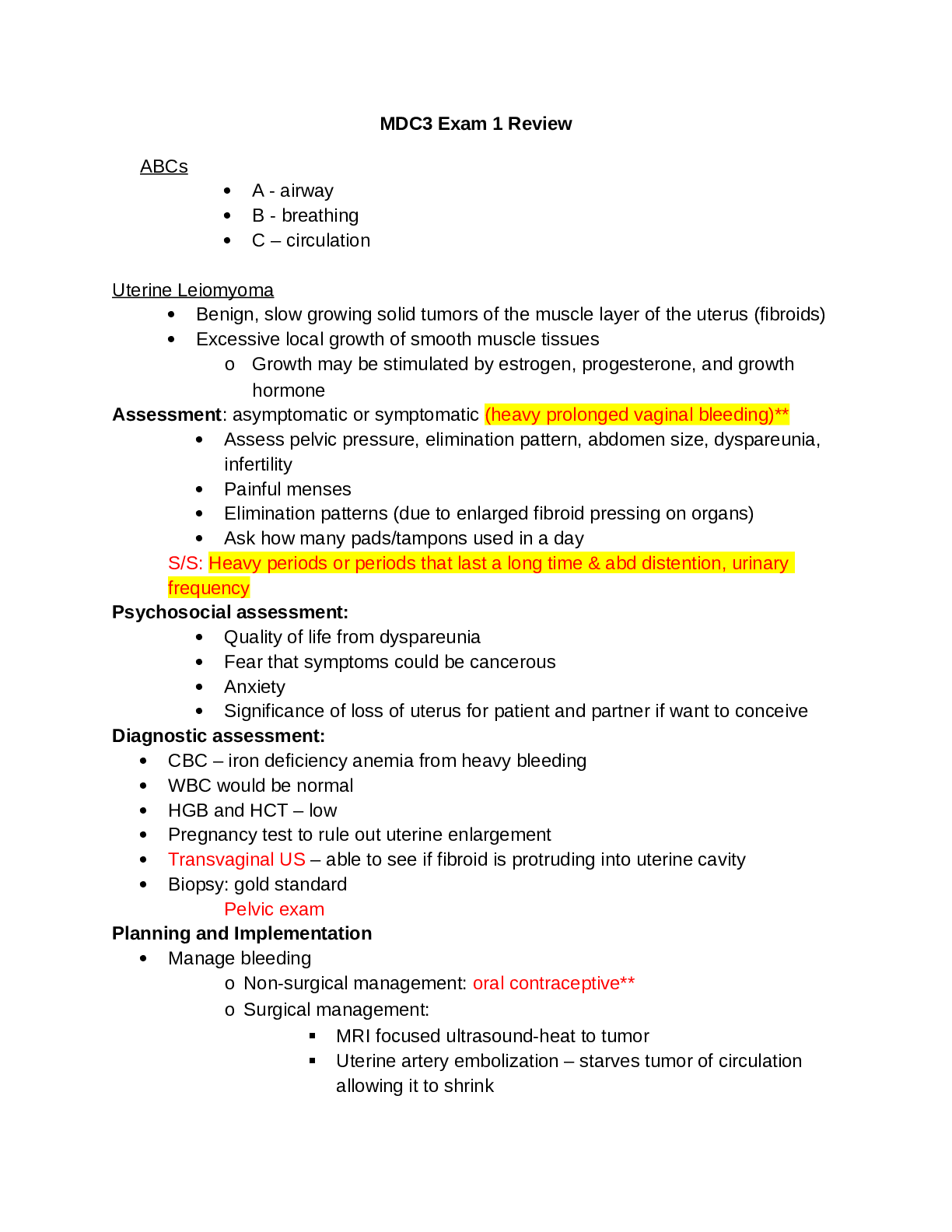

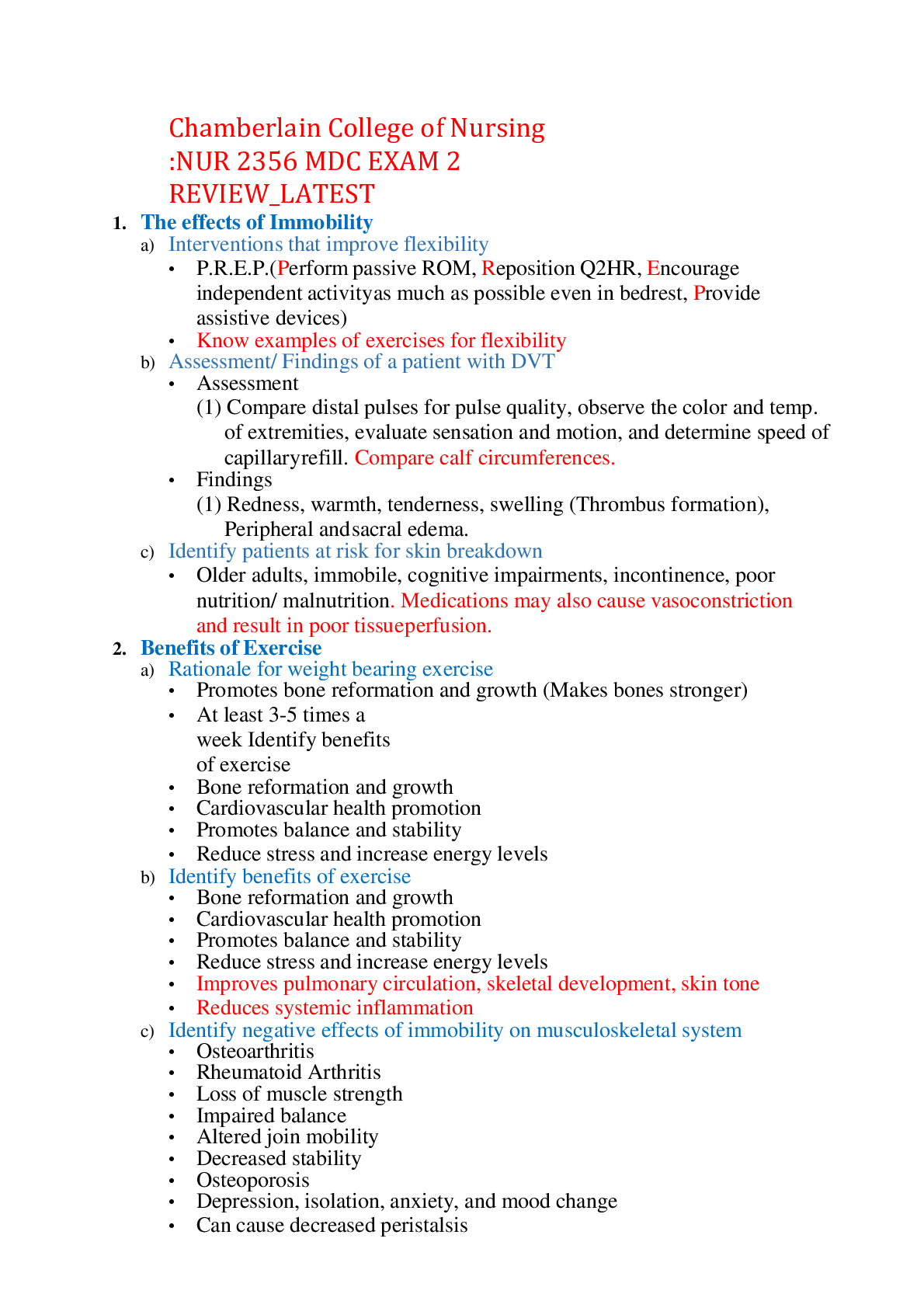
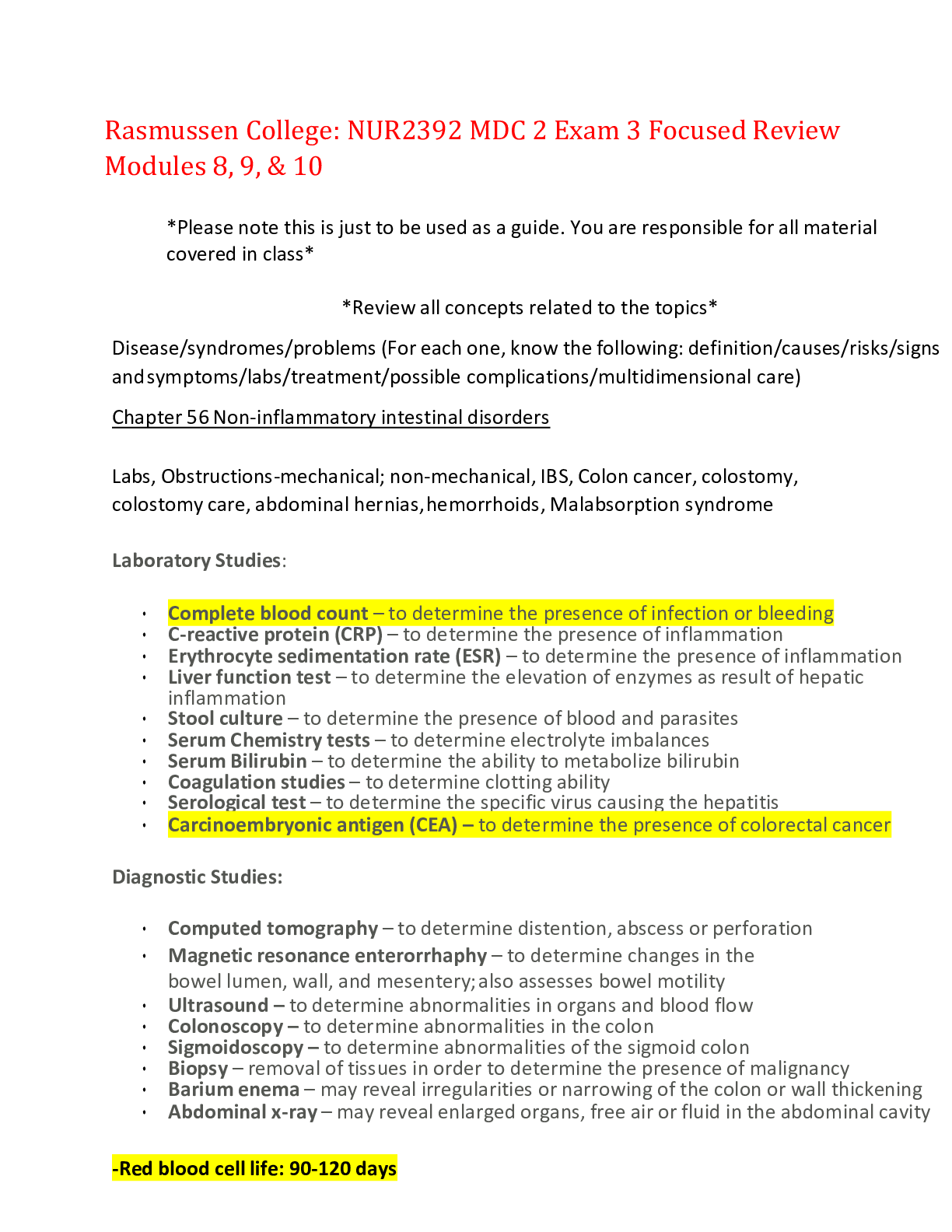
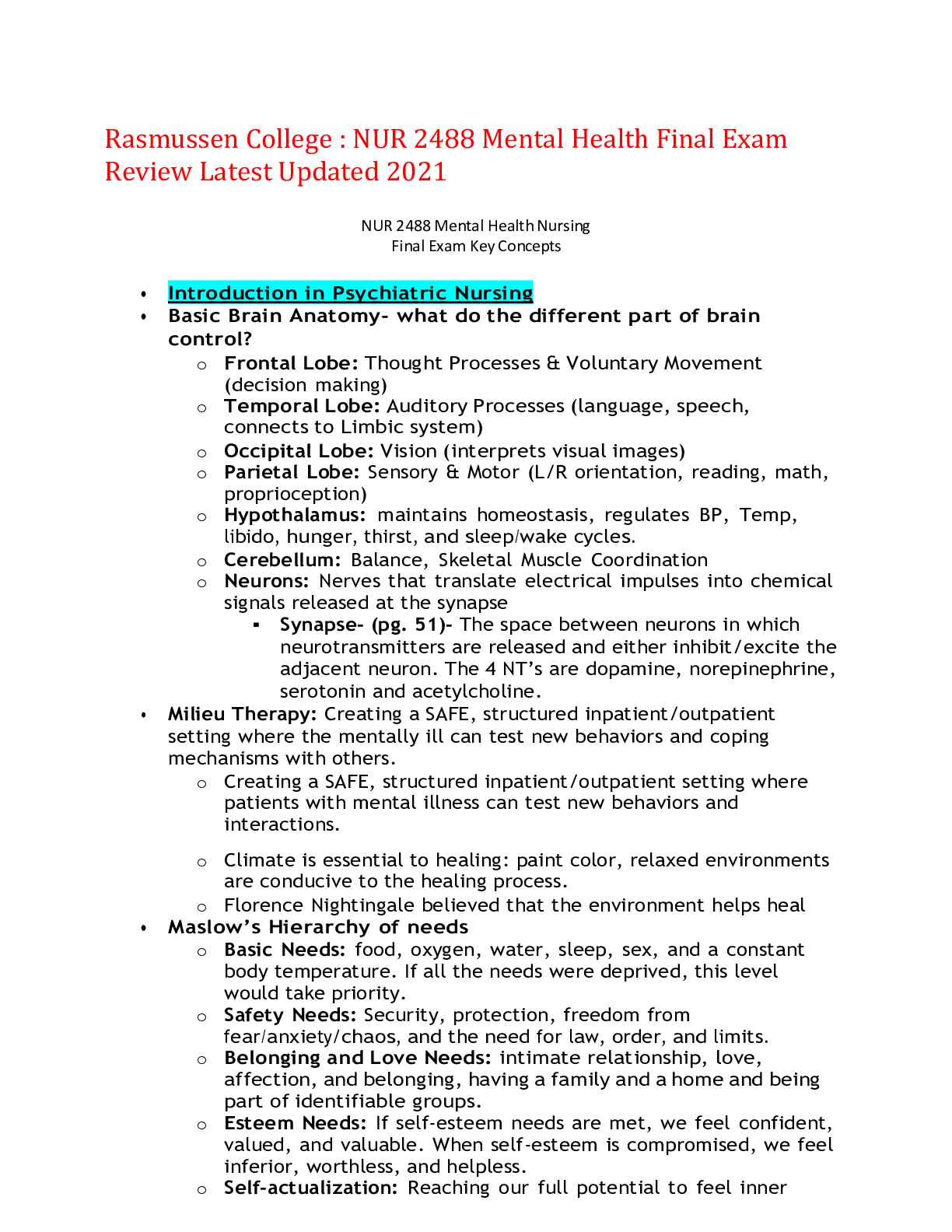
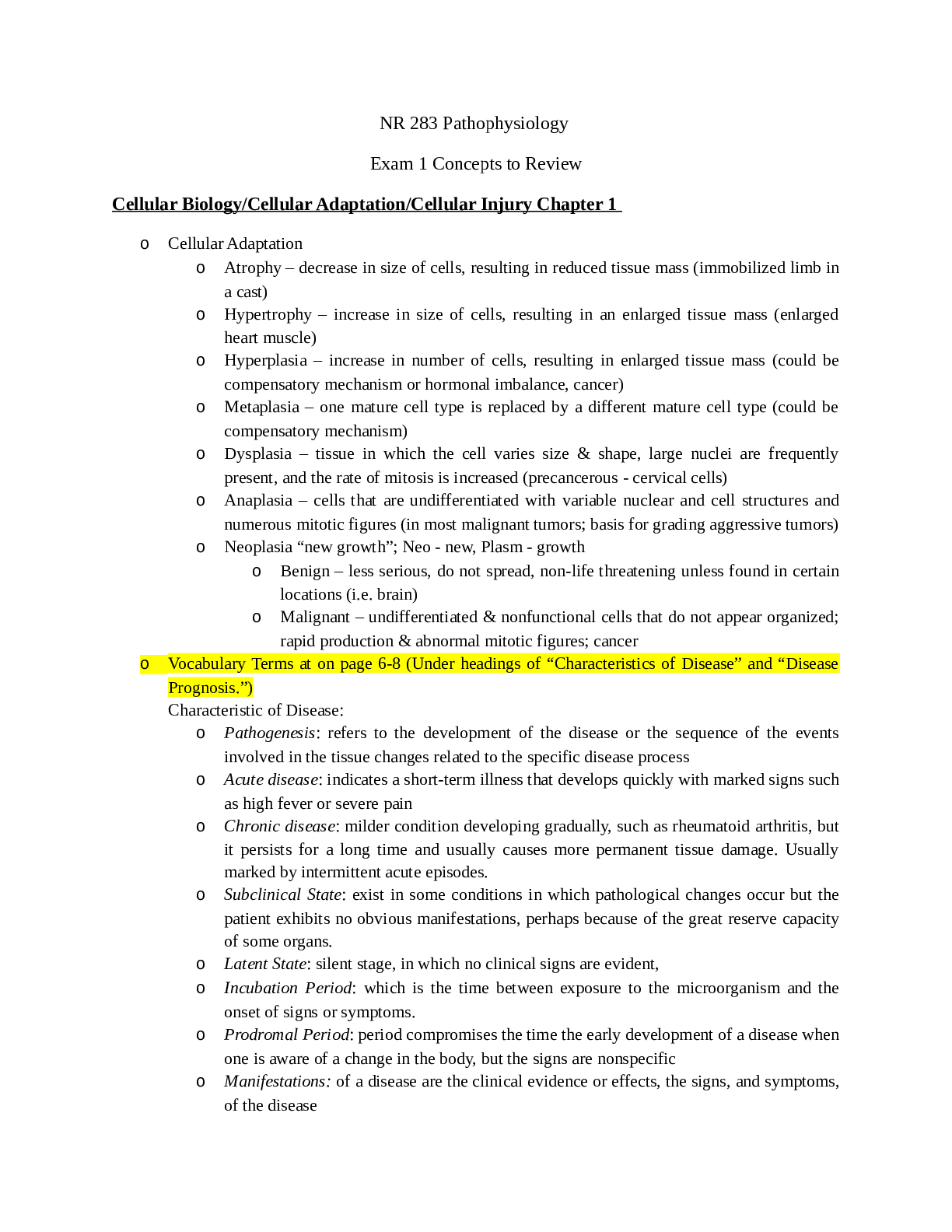




.png)



